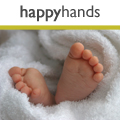Baby Clinic
Breastfeeding
Overcoming breastfeeding problems
Although in the long run, breastfeeding is a wonderful experience for most mothers who try it, even the most determined breastfeeder can find it hard to get used to at first.
In a bid to encourage more women to breastfeed, the issues around feeding problems often don’t get discussed. However, to know what the possible problems can be as well as how to overcome them, will prepare you and help you get through the early weeks.
Remember, all of the following – including mastitis (and even abscesses) – do not mean your breastfeeding regime has to come to an end.
- Not latching on properly. If your baby is unsettled and appears hungry even after feeding, it might be that he is not latching on properly. Go back to basics – relax and reread Getting started. If you still have trouble, ask your midwife to visit or your health visitor, and get her to talk you through it first hand.
- Flattened nipples. Some women find that the flow of milk into their breasts causes their nipples to flatten, making it hard for their baby to latch on. Try stimulating the nipples before feeding by rubbing them gently, or you could try a really handy little device called the Latch Assist by Lansinoh. It’s small, discreet and cheap so it’s a good investment even though you only need it for a short amount of time.
- Sore or cracked nipples. Your breasts are getting used to a new regime but they will get less sensitive, even if at first you might find they sting when your baby latches on. Some women find their nipples bleed at this time. This will not harm your baby during a feed. Try to make sure your baby is latching on properly and until they toughen up, you’ll find that using a soothing, baby-friendly nipple cream will really help.
- Mastitis. This can be very common but is easily treatable. You will notice: swollen, lumpy, red and sore breasts, flu-like symptoms and a raised temperature. Try ibuprofen to ease the pain, inflammation and your fever, and try to soothe the affected area by holding a flannel to the spot when you are laying in a warm bath. Also avoid wearing tight-fitting bras and tops. If the symptoms don’t subside after a couple of days, see your GP urgently as you might require antibiotics. (Make sure you tell your GP that you are breastfeeding.) If left untreated you could develop an abscess – which would require urgent surgery – so it’s important to get it checked out.
- Engorgement. On the days when your baby is not feeding so often you might find your breasts fill with too much milk. Gently massage them and release a little of the milk by doing so or by expressing. Do not express too much, just enough to ease the pressure.
- Blocked milk ducts. Sometimes a blockage can cause a small painful lump in your breast. Keep your breasts supported but don’t wear tight clothes or bras that could put pressure on one part of your breast. Try massaging the area when in a warm bath, and if it doesn’t clear in a day or so, see your GP
Related Articles
A Great Day Out at The Baby Show, Excel
Preparing Premature Infants for School
BornFree – the natural approach to bottles
Bottle-feeding: keeping it natural
Buyer's guide to feeding bottles
Buyer's guide to feeding teats
BabyBjörn venture into drinking cups
Related Products
Tommee Tippee, Closer to Nature Digital Ear Thermometer
Related Forum Topics
Forums: Baby
Re: Try this perfect family lunch in Hyde Park
Clare, Mother of 2, London
Re: fussy eater
Clare, Mother of 2, London
Re: does any1 know anything that will help me get my baby into a better sleep routen?
clarejayne, Mother of 1, Nottinghamshire
Reproaching a stranger for bad behaviour to their child.
Patricia6
Re: Has anyone tried Zita West's fertility supplements? Or what else worked for you?
Guider, Mother of 1, Leicestershire
Have Your Say
Be the first person to comment on this article, just post a comment below.





In order to post a comment you need to be a member. Join Now | Sign in